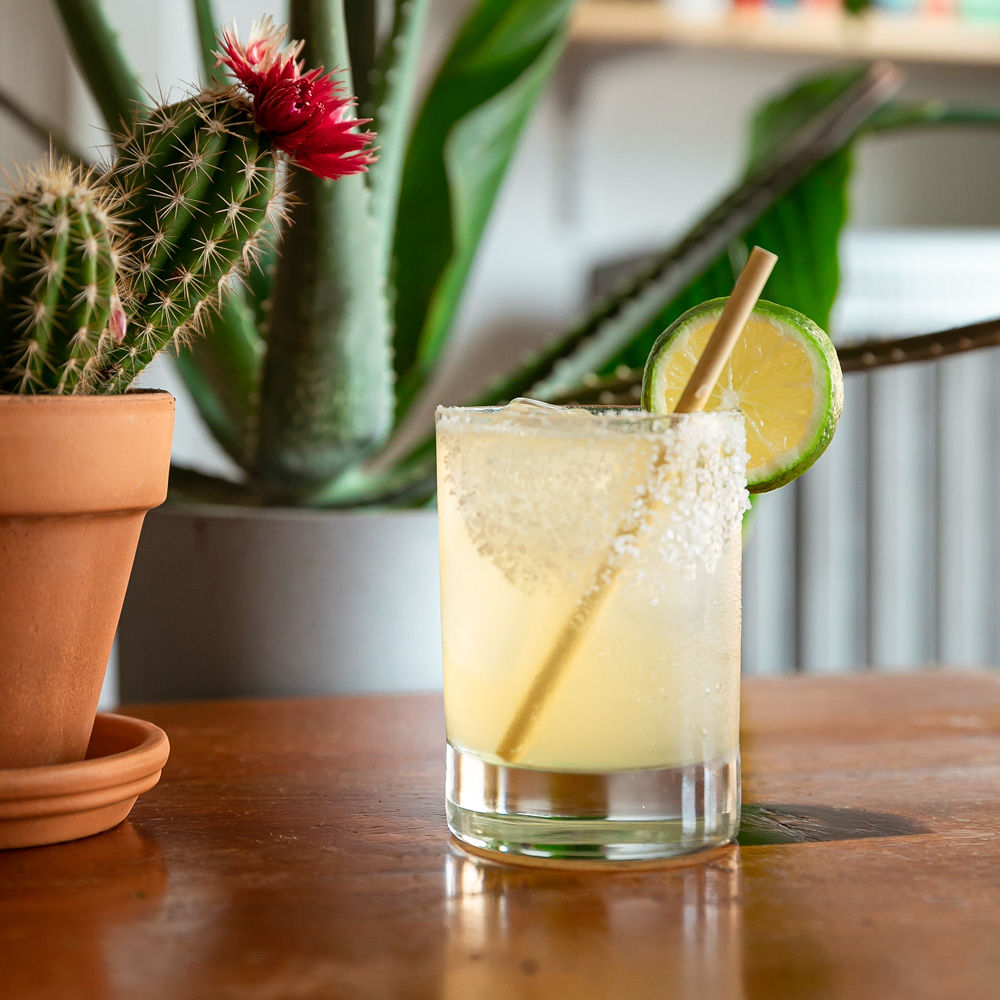The history of the Margarita is one big mess, not by virtue of its age but because of its popularity. Everyone wants a piece of it so there are numerous claims but very little evidence to back up those claims. Here are a few that we uncovered:
- According to Marion Gorman and Felipe de Alba’s The Tequila Book, one story traces the margarita to the bar at the Caliente Race Track in Tijuana, Mexico, about 1930.
- Another credits Doña Bertha, owner of Bertha’s Bar in Taxco, Mexico, with the invention of a drink that later evolved into the margarita.
- The former Los Angeles bartender Daniel Negrete claims to have originated the cocktail in 1936 at the Garcí Crespo Hotel in Puebla, Mexico, naming it after a girlfriend called Margarita.
- Los Angeles’s El Cholo café served margaritas a few years after opening in 1927.
- Another contender for the title of originator was Margarita Sames, who made the drink for houseguests in 1948 while living in Acapulco, Mexico.
- Yet another story credited Pancho Morales, a bartender in Tommy’s Place in Juárez, with the invention of the drink in 1942.
Source: (2012). Margarita. In The Oxford Encyclopedia of Food and Drink in America. : Oxford University Press.
So the problem here is that anyone can make a claim but without corroborating evidence you just have to take each claimant at their word. The few claims that do have articles written about their origin story are decades after the fact which also do not provide supporting evidence at the time of the origin story. So we are kind of left without any ability to identify the true origins of the Margarita.
However, if we look at the first place the Margarita is listed in a recipe book we can see where it took off. The limiting factor is tequila. Tequila itself was not a popular spirit outside of Mexico until Prohibition in the US (and then only very locally) but finally in the Cafe Royal cocktail book 1937 we find numerous recipes using tequila, however, the Margarita is not one of them.
The first place we found the Margarita in a recipe book was Trader Vic’s Pacific Island Cookbook with Side Trips to Hong Kong, Southeast Asia, Mexico, and Texas, 1968. It’s here that we think the drink gained its popularity and became a household name by disseminating through the Hollywood and California population.
“Victor Bergeron, who went to Mexico to find a good tequila cocktail recipe. ‘While tequila is made in Mexico you just don’t find many drinks made with it,’ he wrote. Bergeron concluded that ‘nowhere in Mexico do you find many tequila drinks worth drinking’ The margarita was the exception, so Bergeron developed his own version that consisted of tequila, triple sec or cointreau, and lime juice.”
Source: “Tequila.” Food and Drink in American History: A “”Full Course”” Encyclopedia. Andrew F. Smith. Vol. 2. Santa Barbara, CA: ABC-CLIO, 2013. 911-912. Gale Virtual Reference Library.
Shortly after Trader Vic added the Margarita to his menu, the Margarita gained rapid popularity so this is where we give credit for the origins because even if you can trace the origin of a cocktail you invented in your kitchen, it doesn’t really matter until the world is drinking it.
Addendum: On the Cocktail Spotlight Zoom meeting Mr. Douglas Stailey told us about a bartender in Hollywood named John Durlesser who claims to have invented the Margarita around 1937. On its face, this is just another unsubstantiated claim with no crucial evidence, however, if you look into the story more you learn that Durlesser was a West Coast American “ambassador” to the UK Bartender’s Guild. It’s interesting that also in 1937 the UKBG published their 1st edition of the Cafe Royale Cocktail Book which also was truly the first place one can find tequila listed in cocktail ingredients. In fact, there was a recipe for the Picador that exactly matches that of the Margarita. Doug also shares with us how around the same time there was a tequila distributor introducing tequila to Los Angeles and had mentioned that Durlesser was increasing the popularity of the spirit by using it in his own cocktails. There is a lot of growth and opportunity happening all at the same time here, and though we can’t link any of the story together with certainty as the origin of the Margarita…the information looks compelling.








